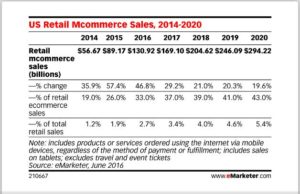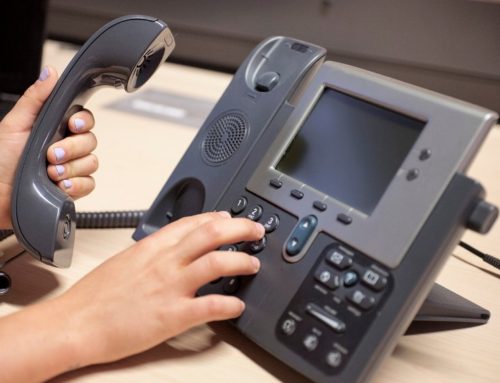Now that everyone is finally familiar with eCommerce, along comes a new kid on the ‘X’-commerce block of Cyberspace: m-commerce. Electronic commerce, commonly written as e-commerce or eCommerce, is the “trading or facilitating of trading in products or services using computer networks, such as the Internet or online social networks,” according to Wikipedia. Now, media publications all seem to be talking about m-commerce. Until last week, I was totally unfamiliar with the term and what it stood for. But, a few minutes of online research told me all I needed to know.
M-commerce: What Is It?
M-commerce is the new techo-term for mobile commerce – selling things to customers through a mobile device like a smartphone, tablet or notebook. Needless to say, with the rise in numbers of mobile devices and the consumers using them, it is something all small business owners need to be aware of.
In a study released in June of this year, eMarketer researched and reviewed statistics on the increasing sales dollars generated via the Internet through mobile devices. In 2014, over $56 billion dollars in m-commerce sales were made. This year, that number has moved upward to more than $130 billion dollars. In just four short years, the numbers predict that m-commerce will exceed $295 billion in sales. M-commerce is not likely to be just a fluke or flash in the pan. It is a topic that small business owners need to include in their planning for their firm’s short term future.

Is your small business ready for the influx of potential new business through this marketing channel? Is your website responsive? What does “responsive” mean? A responsive website is designed to allow marketing messages to look just as good on a small mobile screen as on a large computer monitor – like a desktop or laptop model.
If your small firm has not yet updated to a responsive website, you may be missing out on sales to this rapidly growing market. If consumers can’t easily read your website messages, learn about your company or make purchases from their mobile devices, you could be missing out on significant revenue.
Not Everything is Perfect With M-commerce
Millennial ownership and use of mobile devices is growing. But, never fear, so is growth among the other generations. We may be slow, but eventually we ‘get it’ and move to newer technology. M-commerce may look like it will be the only way to do online purchasing within a few years, but there are still a few drawbacks.
In spite of the increased use of mobile devices for shopping, buying via mobile device is not as popular as you might think. AYTM ( Ask Your Target Market) marketing researchers found that a majority of people don’t really like shopping via mobile device. Those that agree – to some extent – to liking the experience vs. those who to some extent disagree is not that far apart. It’s the significant number (25.4% of respondents) that fall into neutral territory that shows a need to work harder to gain ground.
M-commerce Roadblocks
As with so many things in life, size does matter. The size of the screen on mobile devices continues to keep the growing sales numbers in check. A typical smartphone screen ranges in size between 3.5” – 5.5”. Tablet screens make shopping somewhat easier. But, even at 7” – 10.1”, compared to typical laptop screens of 12” to 17”(diagonal measurement), tablet screens are still relatively small. Desktop monitors range, on the small end from 15” to 17” in size, to a more typical 24″ – 38″. There are much larger options available up to 80” – 90”. Those largest of the screens are pretty much glorified wall-mount TV units. Clearly, the much smaller mobile device screens still represent a challenging shopping experience.
Online shopping on a full sized computer screen allows consumers to see more products, specifications and options at the same time. That’s just not possible on a mobile device yet. Comparing items and different retailers at the same time is possible on a larger desktop/laptop screen or monitor, but not on a much smaller smartphone screen.
That threat to cyber security still hangs heavy on customers’ minds. Providing personal information, especially credit card numbers, during checkout and payment phases of the sales process still makes customers uncomfortable. News reports of major brands having their websites hacked and losing customer data to hackers are enough to make anyone worry.
M-commerce: The Future of Online Shopping
Are smartphones or online shopping going away? Not any time soon. The number of online shoppers continues to grow significantly year after year. Selling to mobile consumers relies on small businesses taking marketing messages to where the customers are – on their smart phones. Websites and email marketing messages must be adapted now to be quickly and easily received on those hand held devices. Soon, we may need to become responsive in even newer ways. Consider the wearable technology introduced over the past several years.
Be sure your marketing plan includes strategies and tactics to make your website and marketing campaigns responsive to mobile consumers. If your ideal customers will only shop and buy from you via their hand held phone, reach out to them there. Make it simple for them to shop with you. Continuing to rely on marketing campaigns focused on brick and mortar stores won’t make your business successful.






